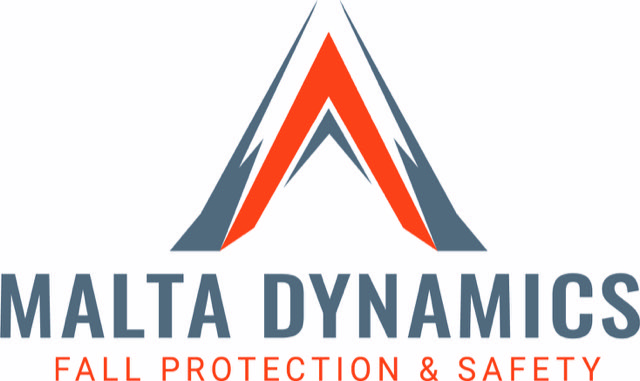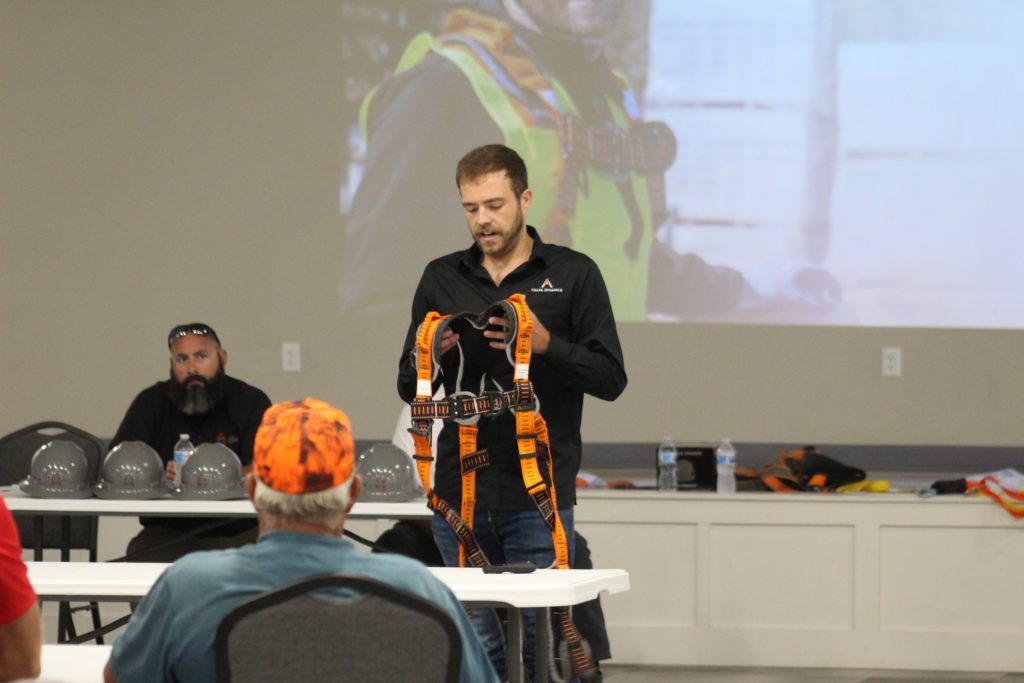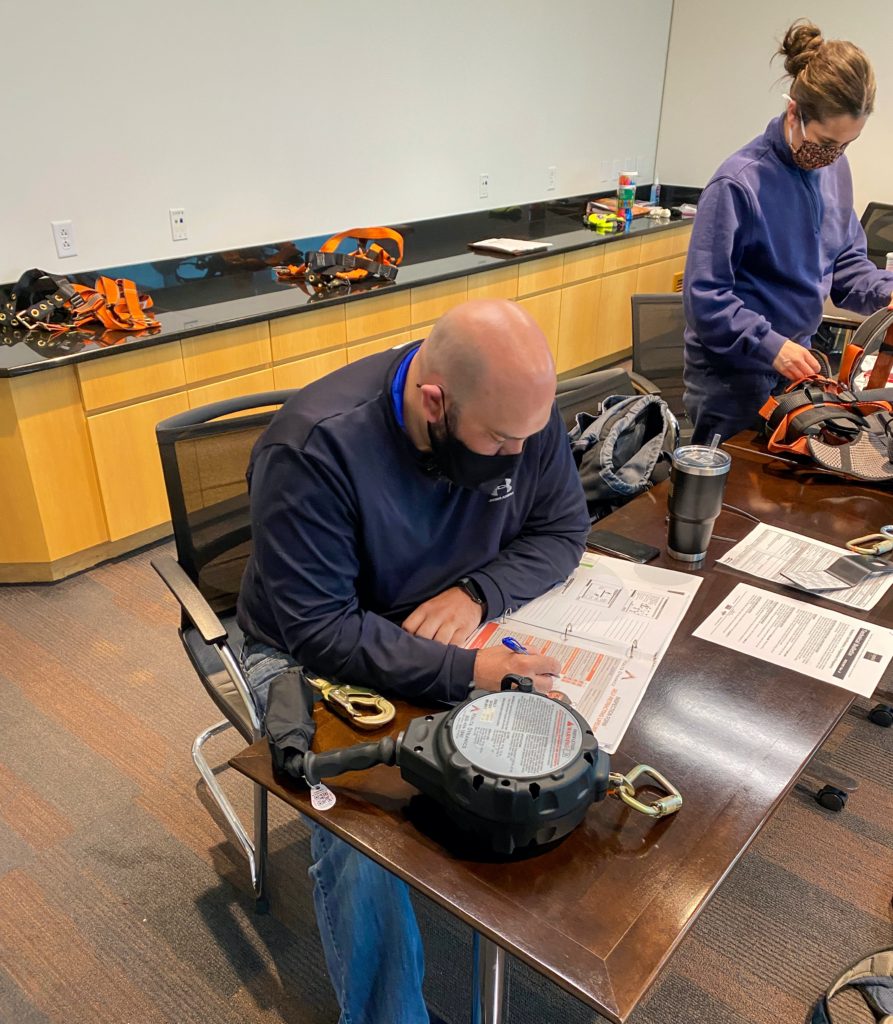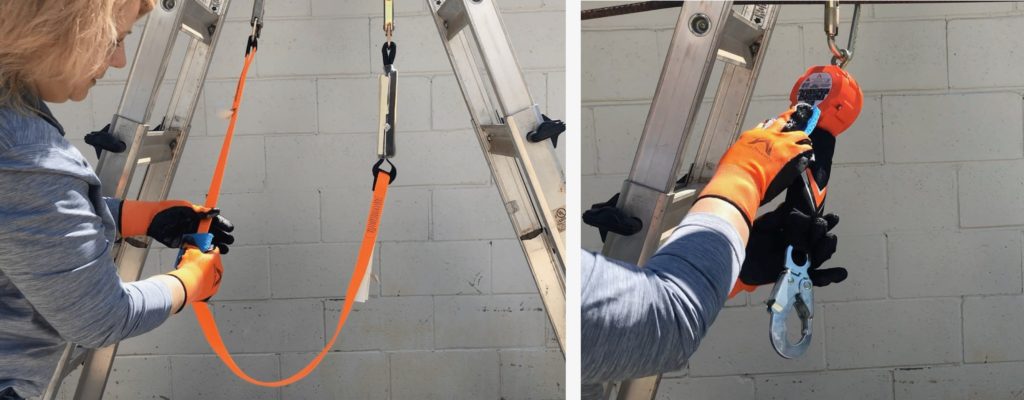Fall System Maintenance
Words and Photos: Malta Dynamics
Sponsored By:

In the world of Masonry, workers frequently find themselves on jobsites that require fall protection. Falls remain the leading cause of jobsite injuries and fatalities year over year, but a lot can be done to avoid these accidents. Of course, the first step in keeping your employees safe is to make a clear and honest assessment of the hazards present onsite and to then equip your team with the appropriate, OSHA compliant fall protection equipment. Once you have invested in the materials to outfit and train your crew for safety success, you’ll want to educate them on how to properly maintain the tools that you’ve provided. Maintaining fall protection systems is not difficult and can be broken down into three components: pre-use inspections, yearly inspections, and care.

A proper pre-use inspection of safety equipment is the key to ensuring your workers remain safe on the job. Train your team to perform a simple examination each and every time they don their fall protection equipment. Check the harnesses, lanyards, and self-retracting lifelines for cuts, frays, burns, and nicks in the webbing or cable of the device. Make sure all the hardware components are free from dents, corrosion, and deformations. Check that the buckles, snap hooks, and gates all open and close properly. Ensure the manufacturer’s labels are present and legible and look to see if the fall indicators have been tripped. To make the pre-use process quick and simple, many fall protection companies, like MaltaDynamics.com, offer free inspection checklists to download and share with your crew. If any of the equipment does not pass the pre-use inspection, it should be removed from service immediately and brought to the competent person on the project for further inspection or replacement.

The next component of fall system maintenance is the OSHA mandated yearly inspection by a Competent Person. OSHA defines a Competent Person as "one who is capable of identifying existing and predictable hazards in the surroundings or working conditions which are unsanitary, hazardous, or dangerous to employees, and who has authorization to take prompt corrective measures to eliminate them" [29 CFR 1926.32(f)]. These Competent Persons are appointed by the employer and have the authority to stop work on the jobsite if a hazard or violation is encountered. In order to keep fall protection equipment in use, an in-depth examination of each piece of fall protection equipment is required. This inspection essentially covers the same checklist as the pre-use inspection but with a closer microscope on the functionality, condition, and cleanliness of the equipment. Remember, if any part of the inspection fails, the equipment should be removed from service and replaced immediately.
The final factor of system maintenance is care. Keeping your fall protection system in good working order also means keeping it clean and stored in a safe place. To clean most devices, simply add regular soap to warm water and sponge the equipment to remove any debris or dirt possible. Then, hang your device to let it dry fully before putting it back into storage for the next job. It is important to note that cleaning agents like bleach or alcohol should never be used on fall protection equipment because of the corrosive effect it might present. Storing equipment, like harnesses, lanyards, and self-retracting lifelines in a temperature controlled, dry, safe place is also essential to maintaining the life of the fall protection system. Lots of our workers like to throw the harness in the bed of their truck after a long workday, but subjecting the equipment to the elements will surely erode the quality of the devices over time.

Many manufacturers used to put expiration dates on their fall protection products but now turn to the inspection of the appointed Competent Person to determine if the piece is suitable for continued use. Why? Different work conditions present a variety of external forces on the equipment, like paint, concrete, or extreme heat. So, to say that a harness that gets splattered with cement daily expires in 5 years would be inaccurate because the concrete degrades the integrity of the harness webbing and can no longer pass a safety inspection. Keeping equipment inspected and well cared for will elongate the service life of the fall protection system and protect the worker and your investment.